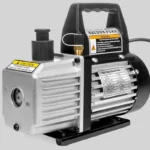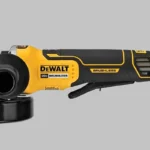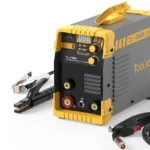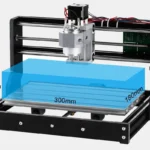Woodworking is both an art and a science that combines creativity with precision. In this craft, the right tools not only make the job easier but also enhance the quality and precision of your work. In this guide, we will list the must-have power tools for every woodworker, from beginners to seasoned artisans.
Understanding each tool’s unique benefits will help you equip your workshop with the best resources for your projects, ensuring that every piece you create not only meets but exceeds expectations.
I. Cordless Drill
The cordless drill is a fundamental tool in any woodworker’s toolkit, known for its versatility and indispensability. It allows you to drill holes and drive screws with precision and ease, making it ideal for countless projects.
Key Features to Consider:
- Battery Life: Opt for a drill with a long-lasting battery to ensure continuous work without frequent recharges.
- Speed Settings: A good drill will offer multiple speed settings to cater to different materials and screw sizes.
- Chuck Type: Choose between a keyless chuck for easy bit changes or a keyed chuck for a more secure hold.
Always check the drill’s settings before use and adjust according to the task at hand. Reading the manual can prevent mishandling and extend the tool’s life.
II. Circular Saw
A circular saw is one of the most powerful and useful tools for cutting wood. It can perform straight, rip, cross, and even bevel cuts, making it incredibly versatile.
Benefits
- Portability: Unlike table saws, circular saws are handheld devices that you can take directly to your workpiece.
- Precision: With the right blade, a circular saw can deliver clean and precise cuts quickly.
Always wear protective eyewear and gloves, and ensure the cutting area is clear of obstructions to avoid kickback.
III. Power Sander
Achieving a smooth finish on wood surfaces is effortless with a power sander. This tool is essential for removing imperfections and preparing surfaces for painting or staining.
Types of Sanders
- Belt Sander: Best for removing large amounts of material quickly.
- Orbital Sander: Ideal for fine sanding and finishing.
- Random Orbit Sander: Combines orbital and spinning actions to reduce swirl marks.
Choose the right grit sandpaper for your project (start with a coarser grit and finish with a finer grit), and always sand in the direction of the wood grain to avoid scratches.
IV. Router
A router is invaluable for adding intricate details and custom profiles to woodwork. It is used to hollow out an area in the face of a piece of wood and is particularly useful in cabinetry and decorative moldings.
Fixed Base vs. Plunge Base
- Fixed Base Router: Offers consistent depth and is ideal for edge shaping.
- Plunge Base Router: Allows the bit to plunge into the wood, perfect for making cuts in the middle of your workpiece.
Different router bits are designed for various tasks; for example, a straight bit for dadoes and grooves, or a rabbeting bit for cutting rabbets.
V. Jigsaw
The jigsaw is a tool that stands out for its ability to make curved and intricate cuts in a variety of materials, including wood, metal, and plastic. Its versatility makes it a must-have for any detailed woodworking project.
Blade Types
- Wood Blades: Have fewer, larger teeth and are designed for faster, rougher cuts.
- Metal Blades: Feature more, smaller teeth suitable for slower, more refined cuts.
For best results, maintain firm support on the baseplate of the jigsaw during cuts. Start with a pilot hole for interior cutouts to provide clean and precise results.
Vi. Compound Miter Saw
A compound miter saw is indispensable for precise angle cuts, which are crucial in creating frames, molding, and other detailed woodwork that require exact joinery. The tool is named for its ability to make miter cuts (angle cuts different from the standard 90 degrees) and compound cuts (angles cut both horizontally and vertically).
Choosing Between Single vs. Dual Bevel Models
- Single Bevel: These saws pivot to one side to create beveled cuts, which means you may need to manually flip your workpiece to make matching bevel cuts on the opposite side.
- Dual Bevel: These allow you to make bevel cuts in both directions without having to move the workpiece, facilitating faster and more accurate work.
Always ensure your working area is clear and the miter saw is securely mounted on a stable surface. Use clamps to hold the workpiece firmly against the fence to prevent movement during cuts. Eye and ear protection is a must, and never position your hands near the moving blade.
VII. Table Saw
The table saw is the heart of a woodworking shop, renowned for its versatility and efficiency in making straight cuts. Its ability to handle large pieces of wood makes it perfect for fundamental tasks like ripping boards or cutting larger panels.
Guide on Basic and Advanced Cuts
- Rip Cuts: These are made along the grain of the wood. The rip fence, an integral part of the table saw, helps guide the wood through the cut, ensuring it is straight.
- Cross Cuts: Performed against the grain of the wood, usually with the aid of a miter gauge to ensure the cut is precise.
- Dado Cuts: For creating grooves or notches. While not all table saws can accommodate dado blades, those that can are invaluable for tasks like shelving or cabinetry.
Keep the saw blade clean and sharp, and regularly adjust the alignment of the blade and fence to ensure accuracy. Lubricating the moving parts will keep the saw operating smoothly.
VIII. Band Saw
The band saw stands out for its ability to make uniform cuts through thick lumber. This tool is perfect for resawing (slicing wood into thinner sections) and making intricate curved cuts.
Blade Selection
Choose a blade based on the thickness of the material and the type of cuts you need to make:
- Thinner Blades: Best for intricate curved cuts.
- Wider Blades: Ideal for straight, uniform cuts, especially when resawing.
Clean the blades after use to prevent buildup of sap and resin. Check the blade tension regularly as a poorly tensioned blade can result in inaccurate cuts or blade breakage.
IX. Oscillating Multi-Tool
This compact and versatile tool can perform a variety of tasks including cutting, grinding, and sanding, thanks to its interchangeable attachments.
Range of Attachments
- Cutting Blades: For wood, metal, and drywall.
- Sanding Pads: For smoothing surfaces.
- Grinding Discs: For removing material or rust.
To get the most out of an oscillating multi-tool, match the speed and motion of the tool to the task. Use steady, moderate pressure to avoid overloading the motor and burning out the tool.
X. Wood Lathe
A wood lathe is essential for any woodworker looking to create rounded items such as bowls, spindles, or decorative furniture legs. It involves securing a piece of wood and rotating it at high speed while using various chisels to shape the material.
Types of Chisels
- Gouges: For creating curves and hollows.
- Skews: For smooth, flat finishes.
- Parting Tools: For cutting deep, narrow grooves.
Always wear safety glasses and ensure that the workpiece is securely fastened. Begin at a lower speed to establish the cut, then increase speed as needed for smoother cutting. Regularly check the tool rest and tailstock for secure attachment.
Equipping your workshop with these power tools will enhance your woodworking capabilities, allowing you to tackle a diverse range of projects with precision and efficiency. Investing in high-quality tools not only provides better results but also ensures safety in your crafting environment. Remember to follow all safety guidelines for each tool, maintain them well, and they will serve as faithful companions in your woodworking journey for years to come. Embrace the learning curve and enjoy the creative process of bringing your wooden masterpieces to life.

Matthew Dowell
Matthew, a seasoned builder from a family of craftsmen, leads Tools Trove. His passion for tools and decades of hands-on experience fuel his commitment to providing expert reviews and insightful content. Whether you’re a pro or a DIY enthusiast, Matthew’s guidance ensures informed decisions in the world of tools.




